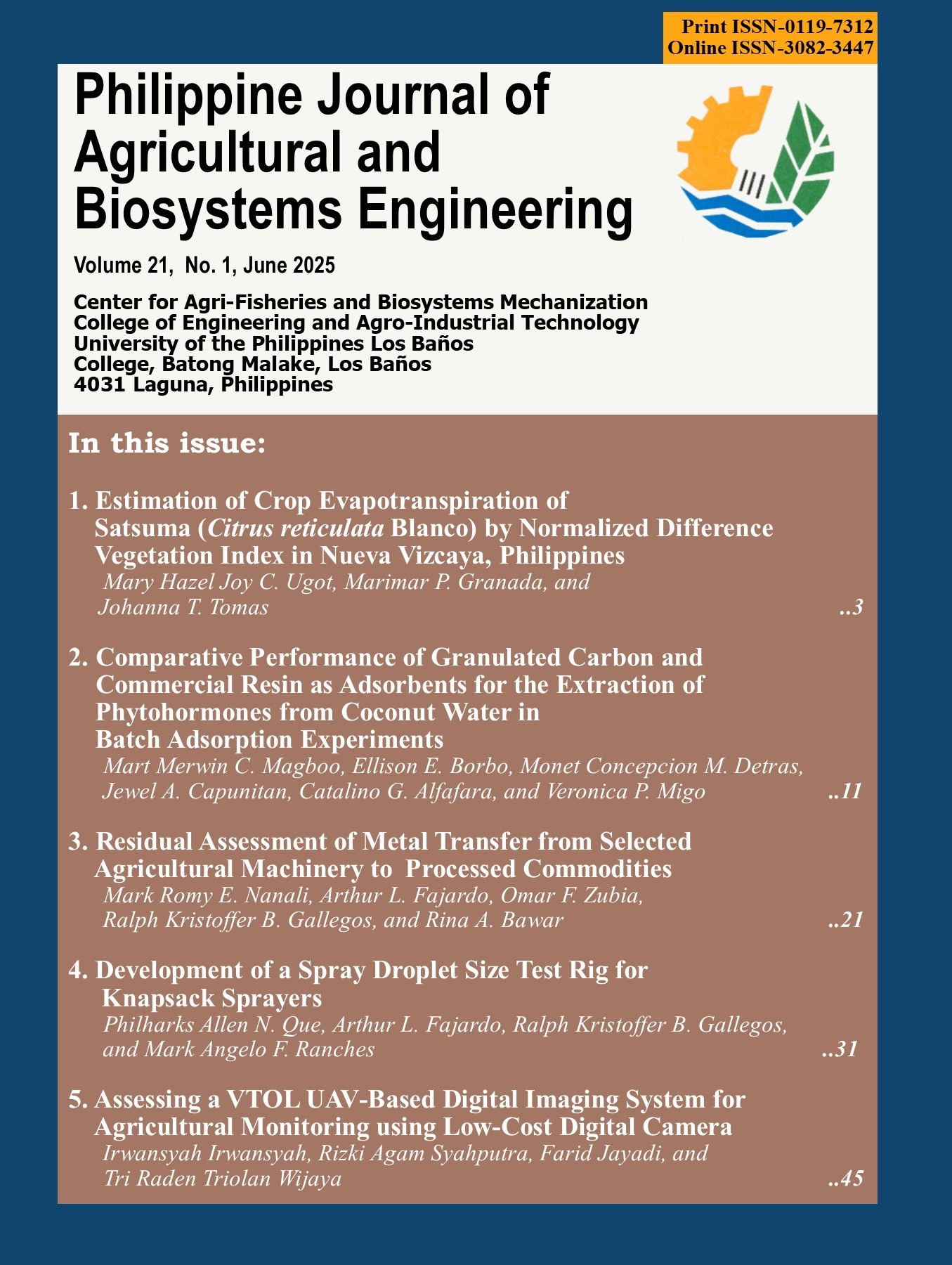Assessing a VTOL UAV-Based Digital Imaging System for Agricultural Monitoring using Low-Cost Digital Camera
Abstract
A vertical take-off and landing unmanned aerial vehicle (VTOL-UAV) was used to assess the possibilities of a digital image-based for agricultural surveillance system. The VTOL-UAV system has advantages in terms of efficiency, adaptability, and capacity to collect data across a variety of terrains for agricultural yield estimation, crop health monitoring, and early pest identification. The developed VTOL-UAV was constructed based on Skywalker platform with wingspan and length of 1800 mm and 1300 mm, respectively. Agricultural images were collected under various field settings using a digital camera (Canon IXUS 185 at 20 MP and 8x zoom). The study took place in an agricultural field at the University Teuku Umar, Aceh, Indonesia. The technical performance, aerodynamic and stability of the VTOL-UAV system during the hover and cruise were examined. Flight plan parameters included speeds between 10 to 20 m/s, camera angle of 90 degrees vertically looking down, altitudes between 50 m to 200 m, and flight overlap between 60 to 70 % flyaway in accordance with the chart in the flight plan that was made. The findings showed that VTOL-UAV offer viability of using imagery captured by a VTOL-UAV equipped with a low-cost camera for agricultural land mapping. Operational flexibility was increased by the capacity to switch between vertical take-off and horizontal flight, particularly in areas with restricted access. The study revealed that the system has to maintain the altitude and reference ground system within the mission planning to ensure stable flight orientation, reduce vibrations and image distortions. The agricultural ortho-photograph and digital surface model are beneficial for accurate mapping, effective monitoring, and informed decision-making in agricultural applications, particularly for smallholder farm management.


